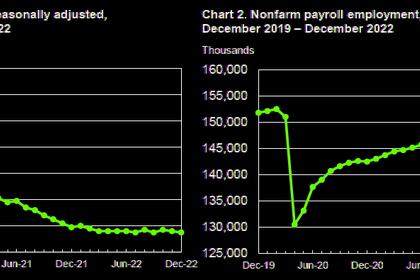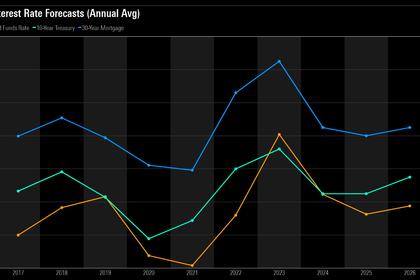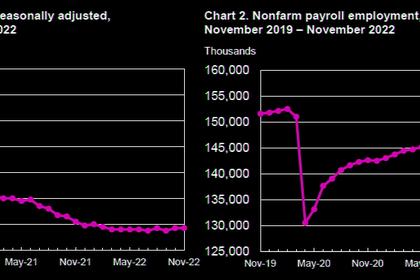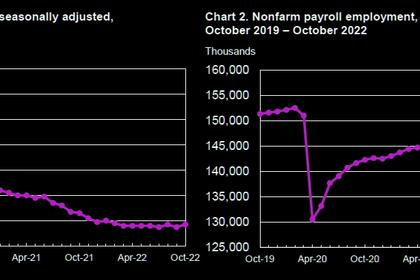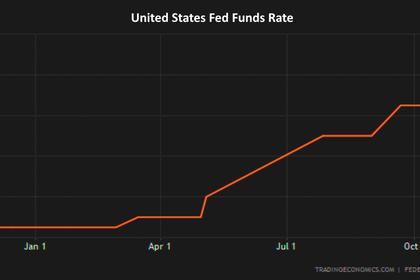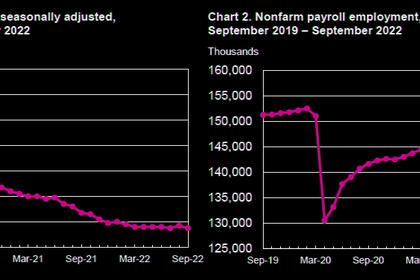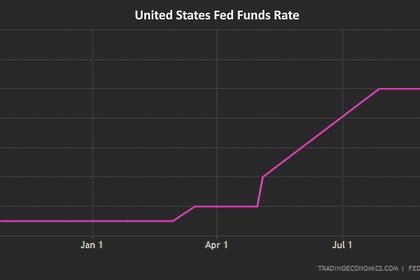
U.S. GDP UP BY 2.9%
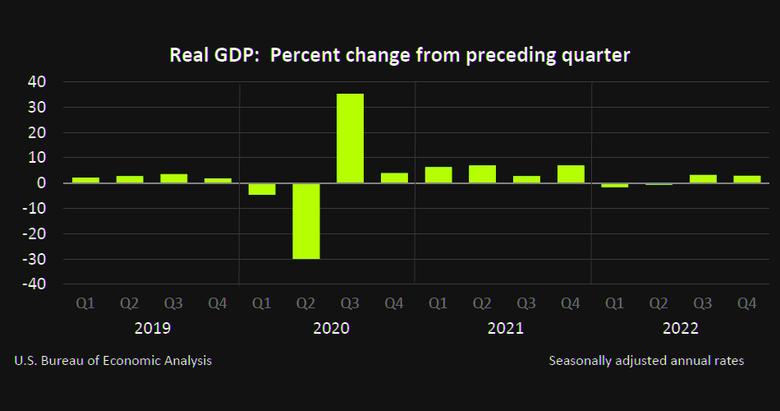
U.S. BEA - January 26, 2023 - Gross Domestic Product, Fourth Quarter 2022 and Year 2022 (Advance Estimate)
Real gross domestic product (GDP) increased at an annual rate of 2.9 percent in the fourth quarter of 2022 (table 1), according to the "advance" estimate released by the Bureau of Economic Analysis. In the third quarter, real GDP increased 3.2 percent.
The GDP estimate released today is based on source data that are incomplete or subject to further revision by the source agency (refer to “Source Data for the Advance Estimate” on page 4). The "second" estimate for the fourth quarter, based on more complete data, will be released on February 23, 2023.
The increase in real GDP reflected increases in private inventory investment, consumer spending, federal government spending, state and local government spending, and nonresidential fixed investment that were partly offset by decreases in residential fixed investment and exports. Imports, which are a subtraction in the calculation of GDP, decreased (table 2).
The increase in private inventory investment was led by manufacturing (mainly petroleum and coal products as well as chemicals) as well as mining, utilities, and construction industries (led by utilities). The increase in consumer spending reflected increases in both services and goods. Within services, the increase was led by health care, housing and utilities, and "other" services (notably, personal care services). Within goods, the leading contributor was motor vehicles and parts. Within federal government spending, the increase was led by nondefense spending. The increase in state and local government spending primarily reflected an increase in compensation of state and local government employees. Within nonresidential fixed investment, an increase in intellectual property products was partly offset by a decrease in equipment.
Within residential fixed investment, the leading contributors to the decrease were new single-family construction as well as brokers’ commissions. Within exports, a decrease in goods (led by nondurable goods excluding petroleum) was partly offset by an increase in services (led by travel as well as transport). Within imports, the decrease primarily reflected a decrease in goods (led by durable consumer goods).
Compared to the third quarter, the deceleration in real GDP in the fourth quarter primarily reflected a downturn in exports and decelerations in nonresidential fixed investment, state and local government spending, and consumer spending. These movements were partly offset by an upturn in private inventory investment, an acceleration in federal government spending, and a smaller decrease in residential fixed investment. Imports decreased less in the fourth quarter than in the third quarter.
Current-dollar GDP increased 6.5 percent at an annual rate, or $408.6 billion, in the fourth quarter to a level of $26.13 trillion. In the third quarter, GDP increased 7.7 percent, or $475.4 billion (tables 1 and 3).
The price index for gross domestic purchases increased 3.2 percent in the fourth quarter, compared with an increase of 4.8 percent in the third quarter (table 4). The PCE price index increased 3.2 percent, compared with an increase of 4.3 percent. Excluding food and energy prices, the PCE price index increased 3.9 percent, compared with an increase of 4.7 percent.
Personal Income
Current-dollar personal income increased $311.0 billion in the fourth quarter, compared with an increase of $283.1 billion in the third quarter. The increase primarily reflected increases in compensation (led by private wages and salaries), government social benefits, and personal interest income (table 8). Within government social benefits, the increase primarily reflected an increase in "other" benefits reflecting state stimulus payments to individuals in the form of one-time refundable tax credits. Disposable personal income increased $297.0 billion, or 6.5 percent, in the fourth quarter, compared with an increase of $242.4 billion, or 5.4 percent, in the third quarter. Real disposable personal income increased 3.3 percent, compared with an increase of 1.0 percent.
Personal saving was $552.9 billion in the fourth quarter, compared with $507.7 billion in the third quarter. The personal saving rate—personal saving as a percentage of disposable personal income— was 2.9 percent in the fourth quarter, compared with 2.7 percent in the third quarter.
GDP for 2022
Real GDP increased 2.1 percent in 2022 (from the 2021 annual level to the 2022 annual level), compared with an increase of 5.9 percent in 2021 (table 1). The increase in real GDP in 2022 primarily reflected increases in consumer spending, exports, private inventory investment, and nonresidential fixed investment that were partly offset by decreases in residential fixed investment and federal government spending. Imports increased (table 2).
The increase in consumer spending reflected an increase in services that was partly offset by a decrease in goods. Within services, the increase was led by "other" services (mainly international travel), food services and accommodations, and health care. The decrease in goods primarily reflected decreases in food and beverages as well as motor vehicles and parts that were partly offset by increases in recreational goods and vehicles and "other" nondurable goods (mainly pharmaceuticals). The increase in exports reflected increases in both goods and services. The increase in private inventory investment primarily reflected increases in manufacturing, wholesale trade, and retail trade industries. The increase in nonresidential fixed investment reflected increases in intellectual property products (led by software) and in equipment (led by information processing equipment) that were partly offset by a decrease in structures (led by commercial and health care as well as power and communication structures).
The decrease in residential fixed investment mainly reflected a decrease in new single-family construction as well as brokers' commissions. The decrease in federal government spending reflected decreases in both defense and nondefense spending. Within imports, both goods (led by nonautomotive capital goods) and services (led by travel) increased.
Current-dollar GDP increased 9.2 percent, or $2.15 trillion, in 2022 to a level of $25.46 trillion, compared with an increase of 10.7 percent, or $2.25 trillion, in 2021 (tables 1 and 3).
The price index for gross domestic purchases increased 6.8 percent in 2022, compared with an increase of 4.2 percent in 2021 (table 4). The PCE price index increased 6.2 percent, compared with an increase of 4.0 percent. Excluding food and energy prices, the PCE price index increased 5.0 percent, compared with an increase of 3.5 percent.
Measured from the fourth quarter of 2021 to the fourth quarter of 2022, real GDP increased 1.0 percent during the period (table 5), compared with an increase of 5.7 percent from the fourth quarter of 2020 to the fourth quarter of 2021.
The price index for gross domestic purchases, as measured from the fourth quarter of 2021 to the fourth quarter of 2022, increased 6.1 percent, compared with an increase of 5.8 percent from the fourth quarter of 2020 to the fourth quarter of 2021. The PCE price index increased 5.5 percent, compared with an increase of 5.7 percent. Excluding food and energy, the PCE price index increased 4.7 percent, the same as from the fourth quarter of 2020 to the fourth quarter of 2021.
-----
Earlier:
